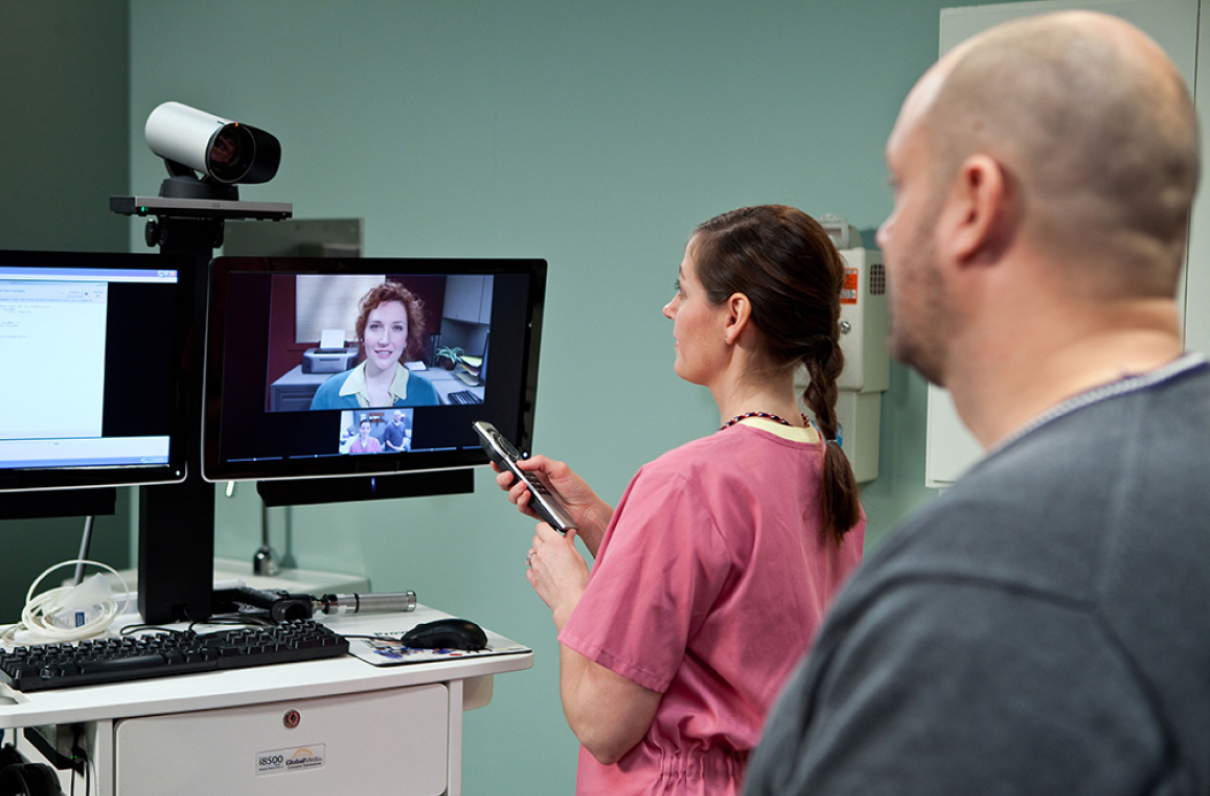This article by Linda F. Hersey originally appeared on Stripes.com. Stars and Stripes serves the U.S. military community by providing editorially independent news and information around the world.
WASHINGTON — Army veteran Andy Butzler said he prefers to attend medical appointments at the Department of Veterans Affairs via online conference calls rather than drive an hour from his home in Osceola, Wis., to the regional veterans clinic.
“I don’t have to take time off from work in order to drive an hour each way for a doctor’s appointment,” said Butzler, a veterans’ service officer for the Polk County government in northwest Wisconsin.
Osceola is a rural town and there are no brick-and-mortar VA clinics to provide in-person medical care.
Butzler, 41, a former paratrooper with the 82nd Airborne Division, said he uses his smartphone instead to book appointments online, see clinicians via telehealth and refill prescriptions.
[RELATED: Planned Expansion of Agent Orange Benefits Will Cover Stateside Exposures]
More than 40% of veterans, or 2.5 million patients enrolled in VA health care, rely on telehealth for at least part of their care, according to the VA.
The VA delivered 11.6 million telehealth visits in fiscal 2023 for clinical services that spanned diagnostics, doctor appointments and suicide prevention services. The VA had 2.6 million visits in 2019.
Veterans using the Rx Refill app ordered an average of 190,000 prescription refills per month in 2023, up from 106,000 in 2021.
Behind the numbers are veterans seeking online care for the access, convenience and privacy, the VA said. Veterans refill prescriptions, text their providers and go to appointments.
“Telehealth works for most any of my doctor visits that don’t require an in-person physical exam,’’ Butzler said.
When he required a specialist to examine a mole on his back, a provider at the regional VA clinic took a high-resolution image and forwarded it to a dermatologist at the Minneapolis VA Medical Center for review.
“Within a couple of days, a report was sent back. It was all clear,” said Butzler, who served in the Army from 2005-2008, including two tours in Iraq. “There were no problems.”
[RELATED: Respite Care, Other Support Services are Lifelines for Caregivers and Veterans]
More than 770,000 veterans in rural areas had more than 2 million telehealth visits in 2023 in their home or at a designated site in their community, the VA said.
The Polk County veterans service office where Butzler works has designated private space for veterans who need assistance or who do not have internet service at home to access VA telehealth care.
“Veterans often are more comfortable seeking treatment through virtual appointments because it feels more private to them,” said Waco Hoover, a Marine Corps veteran who leads the American Legion’s “Be the One” campaign to reduce veteran suicides.
More than 1 million veterans received mental health counseling sessions online in fiscal 2023, a 5% increase from the prior year.
Hoover said he hears from many veterans with medical problems and disabilities related to military service and many of them prefer to use telehealth for counseling because it feels secure and they can access it at home.
[RELATED: Navy Issues Fraud Alert for Camp Lejeune Contamination Claims]
“Telehealth has played a pivotal role in combating the stigma around veterans asking for mental-health help,” he said.
Though telemedicine has been growing for more than a decade for veterans and nonveterans, the shutdown of doctors’ offices during the coronavirus pandemic in 2022 led Congress to loosen some telemedicine regulations and more patients to seek web-based health care.
Prior to the pandemic, less than 1% of doctor visits for the general population in 2019 were via telehealth with those visits reaching close to 6% by the end of 2023, according to Epic Research, a health records management system that reviewed 500 million telehealth and in-person medical visits.
The VA is in the process of redesigning and updating essential veteran services offered through its website, VA.gov. The goal is to enable veterans to access essential VA services — health care, claims and benefits — all in one place.
The consumer health information from the websites MyHealtheVet and MyVAHealth will be combined into one unified patient portal for veterans on VA.gov, the VA said.
The redesign will be rolled out in phases during the next two years, with the VA testing the site and services with veterans to refine the design.
[RELATED: VA Plans Outreach to Screen 3 Million More Veterans for Toxic Exposures]
Once the update is complete, veterans will be able to log on at VA.gov to access most health services, view medical records and track their benefits.
About 2 million veterans have downloaded the VA health and benefits mobile app since it launched in 2021. Popular features include texting providers and downloading VA letters regarding health claims and benefits.
Get Help Navigating VA Benefits
Questions about VA benefits? Start here. PREMIUM and LIFE Members have direct access to our webinar archive with to-the-point information on everything from claims and appeals to concurrent receipt to home loans and more.
